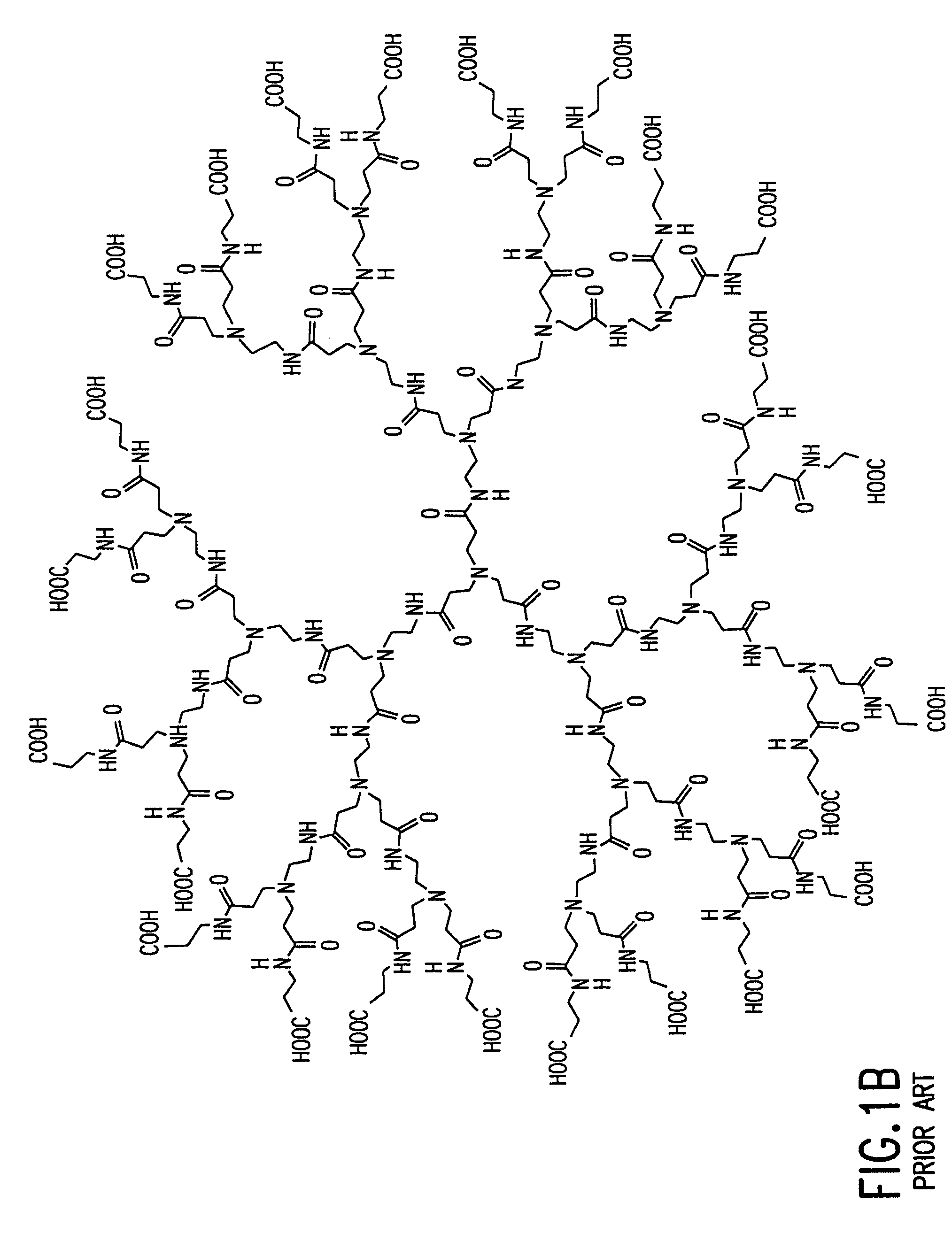Dendritic chemiluminescent substrates
- Summary
- Abstract
- Description
- Claims
- Application Information
AI Technical Summary
Benefits of technology
Problems solved by technology
Method used
Image
Examples
examples
Synthesis of Activated Ester Dendrimers
A solution of 100 mg carboxylate-terminated dendrimer (e.g., Starburst PAMAM dendrimer, adjusted to pH 7) and N-hydroxysuccinimide (1.0 eq per carboxylate end group) in 20 ml dry 1,2-dimethoxymethane is stirred at 0° C. A coupling agent, e.g., dicyclohexylcarbodiimide (DCC, 1.0 eq per carboxylic acid end group) or 1-(3-dimethylaminopropyl)-3-ethylcarbodiimide hydrochloride (EDCl, 1.0 eq per carboxylic acid end group), is added at 0° C. and the solution is stored in the refrigerator overnight. The urea byproduct is removed by filtration or by an aqueous wash (EDCl byproduct), the organic solvent is evaporated, and the crude product is purified by chromatography.
Synthesis of Dendritic Polymer Enol Ether Conjugates Having the General Structure Depicted in FIG. 4A or 4E
To a stirred solution of 100 mg activated ester-terminated dendrimer in 15 ml CH2Cl2 with 0.1 ml triethylamine is added enol ether with a linker terminated with a primary or secondar...
PUM
| Property | Measurement | Unit |
|---|---|---|
| Chemiluminescence | aaaaa | aaaaa |
Abstract
Description
Claims
Application Information
 Login to View More
Login to View More - R&D
- Intellectual Property
- Life Sciences
- Materials
- Tech Scout
- Unparalleled Data Quality
- Higher Quality Content
- 60% Fewer Hallucinations
Browse by: Latest US Patents, China's latest patents, Technical Efficacy Thesaurus, Application Domain, Technology Topic, Popular Technical Reports.
© 2025 PatSnap. All rights reserved.Legal|Privacy policy|Modern Slavery Act Transparency Statement|Sitemap|About US| Contact US: help@patsnap.com



